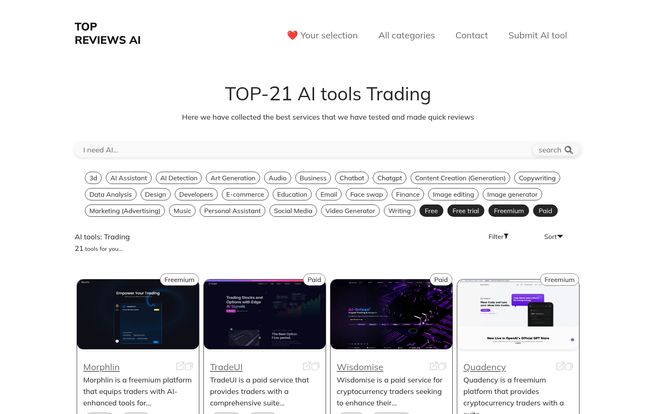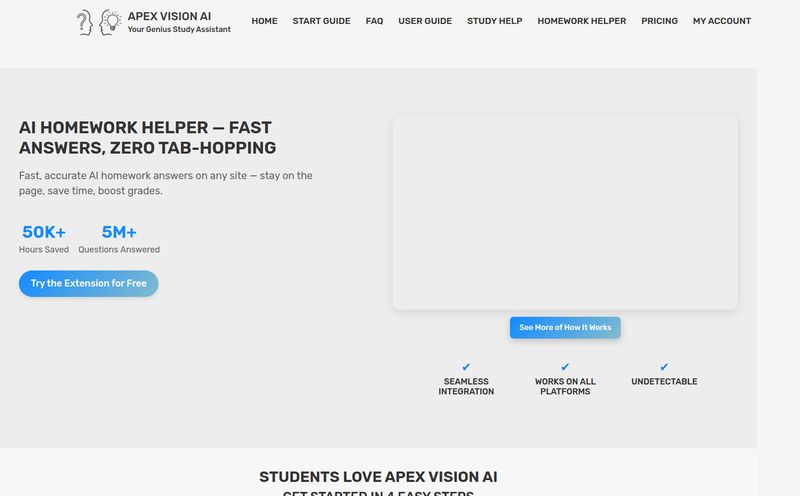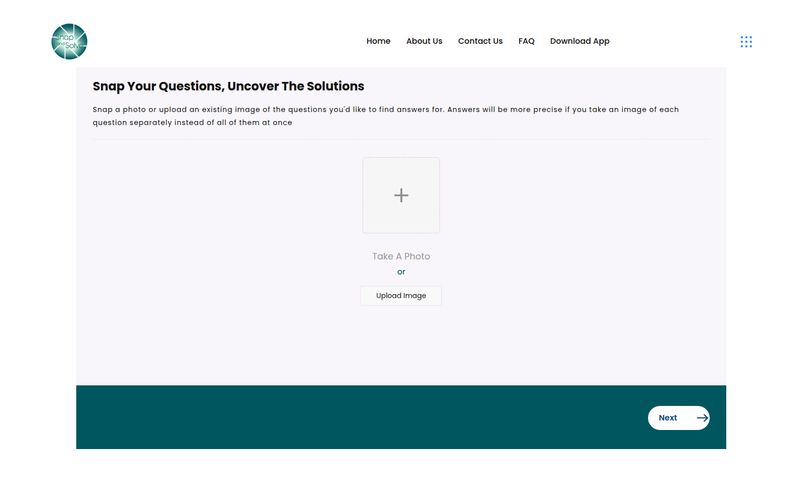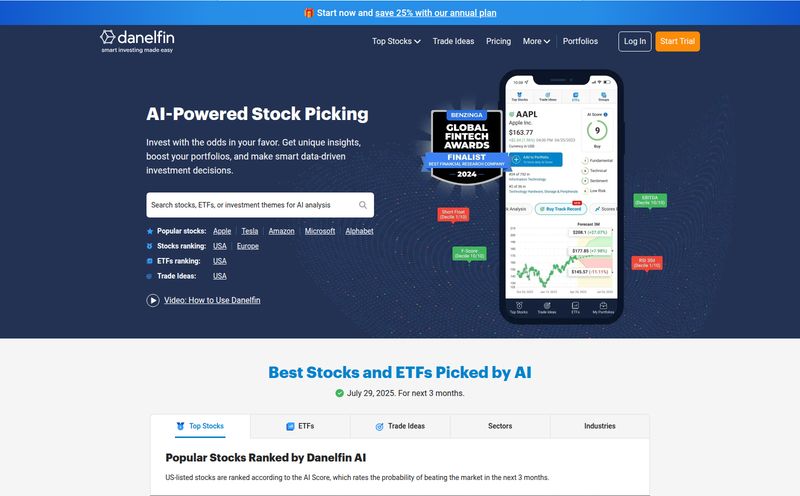Another day, another dozen AI tools popping up in my feeds. Honestly, it’s getting hard to keep track. As someone who’s been in the SEO and digital trends game for years, I've seen these waves before. The dot-com boom, the mobile app explosion, and now, the great AI gold rush. Every so often though, one catches my eye. A few weeks back, it was a tool called PulseGPT.
It showed up on a few directories, filed under 'AI Trading' and 'Investment'. The premise was simple, almost deceptively so: “Synthesized answers based on real data for informed investment decisions.”
I mean, who wouldn’t want that? The dream of taking the gut-wrenching guesswork out of investing and replacing it with cool, calm, data-driven AI logic. It sounded like the perfect shortcut for both seasoned traders tired of drowning in data and newcomers terrified of making a wrong move. So, I added it to my list of tools to investigate.
So What Was PulseGPT Supposed to Be?
From the breadcrumbs I could find, PulseGPT positioned itself as a financial oracle. You ask, it answers. The core idea was to process mountains of real-time market data—something that would take a human analyst days to sift through—and distill it into a straightforward, synthesized answer. It was designed to help you make investment decisions “quickly and easily.”
No more staring at candlestick charts until your eyes bleed or reading dense quarterly reports that feel like they were written in another language. Just a simple, AI-powered pulse on the market. A pretty compelling pitch, right?
The platform seemed to be a product or project associated with a company called TriangleAI, built on a standard modern web stack (create-react-app for you tech nerds out there). It was all set to be another player in the rapidly crowding space of fintech AI.

Visit PulseGPT
The Seductive Promise of an AI Crystal Ball
Let's be real, the appeal here is massive. The financial markets are a chaotic storm of information. A tool that promises to be your lighthouse in that storm is going to get attention. For years, retail investors have been at a disadvantage against the big firms with their armies of analysts and high-frequency trading algorithms.
Tools like PulseGPT offer the promise of leveling that playing field, just a little. They offer a sense of control and insight that was previously out of reach for the average person. It’s not just about making money; it's about empowerment.
But, There Were Red Flags
Now, this is where my professional skepticism always kicks in. As I dug into the available info, some cracks started to appear in the shiny veneer. The two biggest issues that were flagged by early observers were:
- A Lack of Transparency: The tool claimed to use “real data,” but there was very little information on what data. Which sources? What was the methodology for synthesis? When you're talking about putting real money on the line, “trust me, it’s real data” just doesn't cut it. It felt a bit like a black box, and any seasoned investor will tell you to be very, very wary of black boxes.
- Poor Onboarding: Apparently, there was also a lack of clear instructions on how to use the platform effectively. This is a classic startup fumble. You can build the most brilliant tool in the world, but if people don't understand how to use it, it’s just a paperweight.
These cons pointed to a product that was likely rushed to market or was still in a very early beta stage. An exciting idea, maybe, but not quite ready for primetime.
The Elephant in the Room: Where Did It Go?
So, with my notes in hand, I went to the PulseGPT website to finally sign up and give it a spin. And I was greeted by… nothing.
HTTP Status: 404 (Not Found)
The digital equivalent of a “We’ve Moved!” sign with no forwarding address. The tool is gone. Vanished. Poof.
This isn’t exactly a rare occurrence in the startup world, especialy in a hot-and-heavy field like AI. A 404 page can mean a lot of things. Maybe the founders ran out of runway and had to shut it down. Perhaps they were acquired by a larger company that was more interested in their team or underlying tech than the product itself (an 'acqui-hire'). Or maybe they simply pivoted, deciding the initial idea wasn't viable and are now working on something new under a different name.
Given its connection to TriangleAI, that's the first place I'd look for clues. But for all intents and purposes, PulseGPT as a standalone product seems to be a ghost.
The Final Verdict on a Tool That Barely Existed
It’s hard to review something you can’t even use. But we can assess the idea. And the story of PulseGPT serves as a fantastic case study for anyone exploring the world of AI finance tools.
| The Good Idea | The Questionable Execution |
|---|---|
| Quick, easy access to investment info. | Lack of transparency on data sources. |
| Aimed to simplify a complex process. | Poor user instructions and guidance. |
| Leveraged AI for data synthesis. | It no longer exists, which is a major drawback! |
The core concept was solid. The execution, from what little we know, was shaky. And its ultimate disappearance is a stark reminder of the volatility of this market. For every AI tool that becomes the next big thing, there are a hundred PulseGPTs that flicker for a moment and then fade away.
So, What's the Takeaway?
The story of PulseGPT shouldn't scare you away from using AI to help with your finances. Not at all. It should, however, make you a smarter consumer. When you're evaluating the next shiny AI investment platform, ask the tough questions:
- Where does your data come from? Be specific.
- What is your methodology? How does the AI actually reach its conclusions?
- Who is the team behind this? Do they have a track record in both finance and technology?
- What’s their business model? If it’s free, how are they planning to make money later?
Don't get blinded by a slick landing page and a big promise. The best tools are the ones that are transparent, well-documented, and built for the long haul. Not the ones that might vanish overnight.
Frequently Asked Questions
- What was PulseGPT?
- PulseGPT was an AI-powered tool designed to provide synthesized answers from real market data to help users make investment decisions quickly and easily.
- Was PulseGPT a free tool?
- Information on its pricing was never made public. Given its early stage and lack of features, it was likely free or in a free beta phase before it was shut down.
- Why can't I find the PulseGPT website?
- The website for PulseGPT currently returns a 404 'Not Found' error, which means the site has been taken down. The project appears to be discontinued.
- Who was behind PulseGPT?
- It appeared to be associated with a company called TriangleAI, but specific details about the development team are scarce.
- Are there good alternatives to PulseGPT?
- Absolutely. The AI trading and investment space is full of tools. Look for established platforms with transparent methodologies and positive user reviews. Tools like TradeUI, Stocknews AI, or MarketGPT are often mentioned, but always do your own research.
A Final Thought
The tale of PulseGPT is a cautionary one, but it’s also exciting. It shows just how much energy and innovation is being poured into the financial AI space. For every tool that disappears, another, better one is probably being built. The key is to be discerning. Seek out transparency, demand clarity, and never, ever invest your money based on a black box, no matter how intelligent it claims to be.
Keep your eyes open, stay skeptical, and happy investing.
Reference and Sources
For further reading on the growth of AI in the financial sector, you can explore resources and reports from established financial news outlets and market research firms. A good starting point might be an article like this one from Forbes on The Role Of AI In The Future Of Investing.



